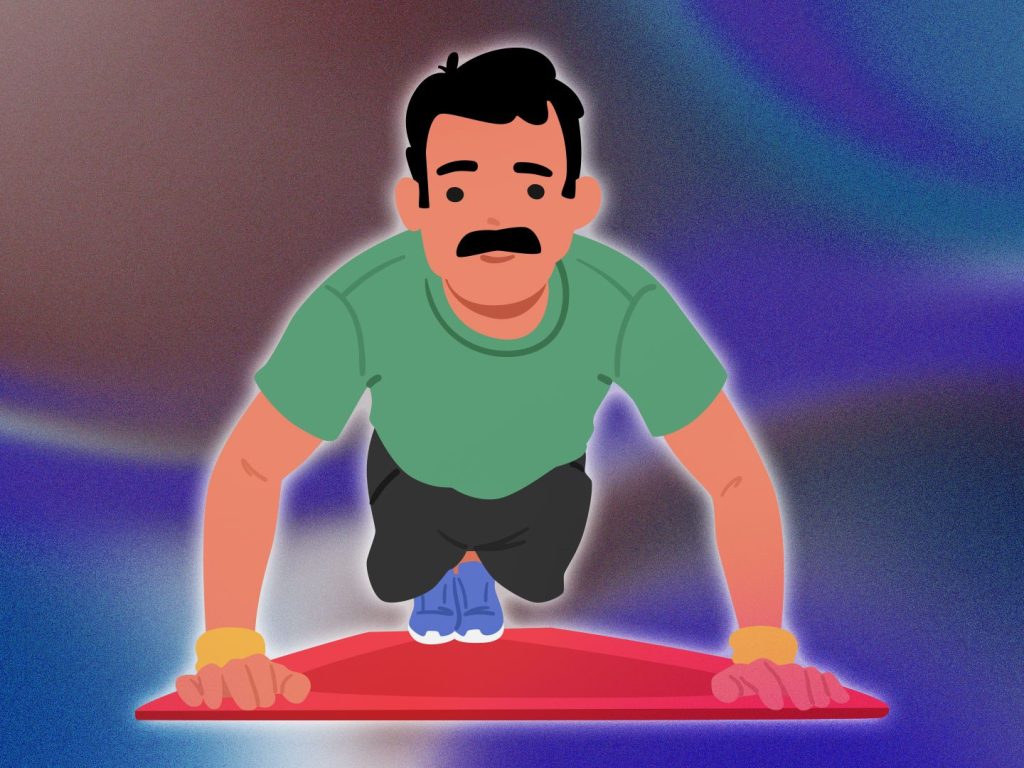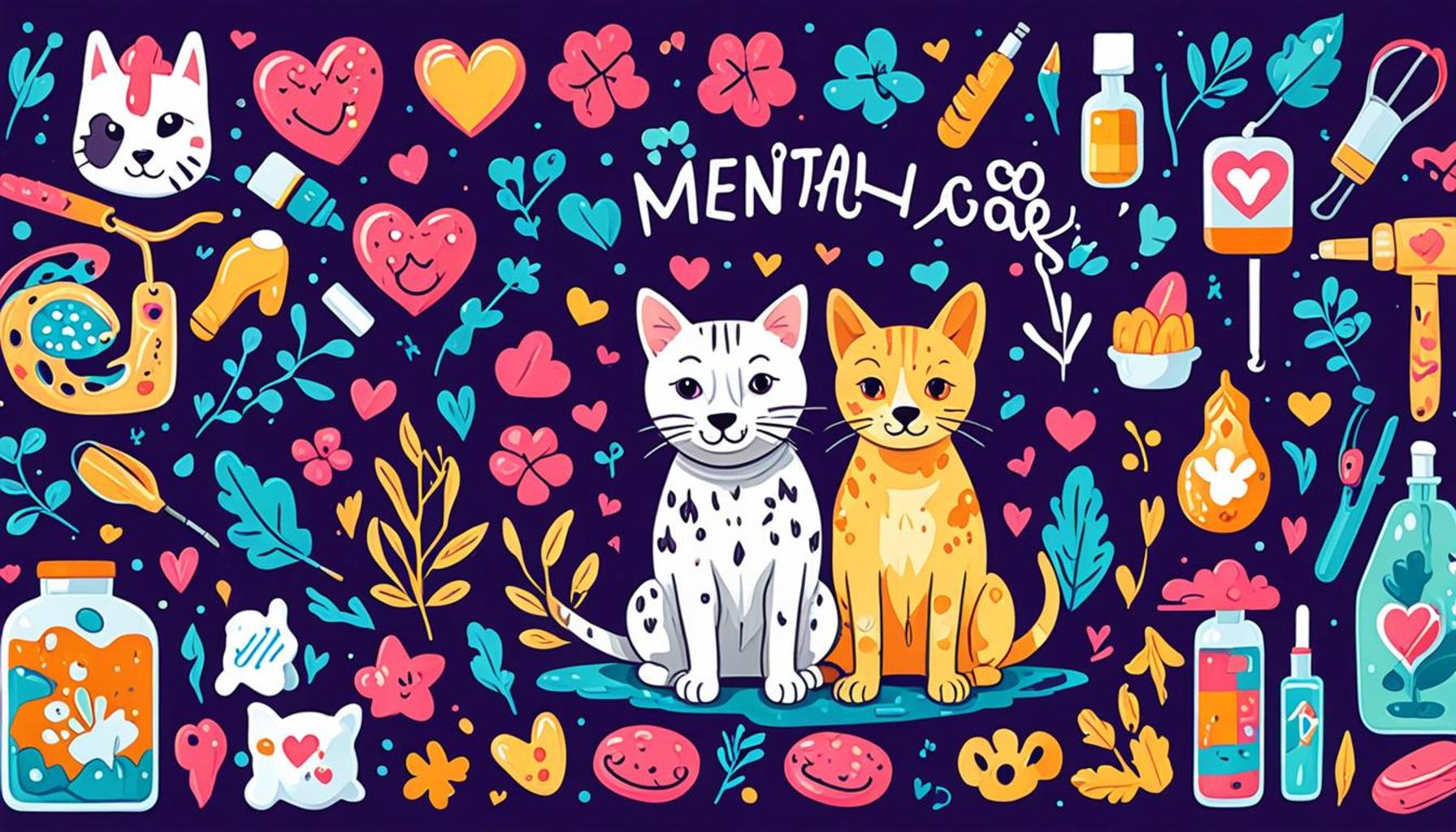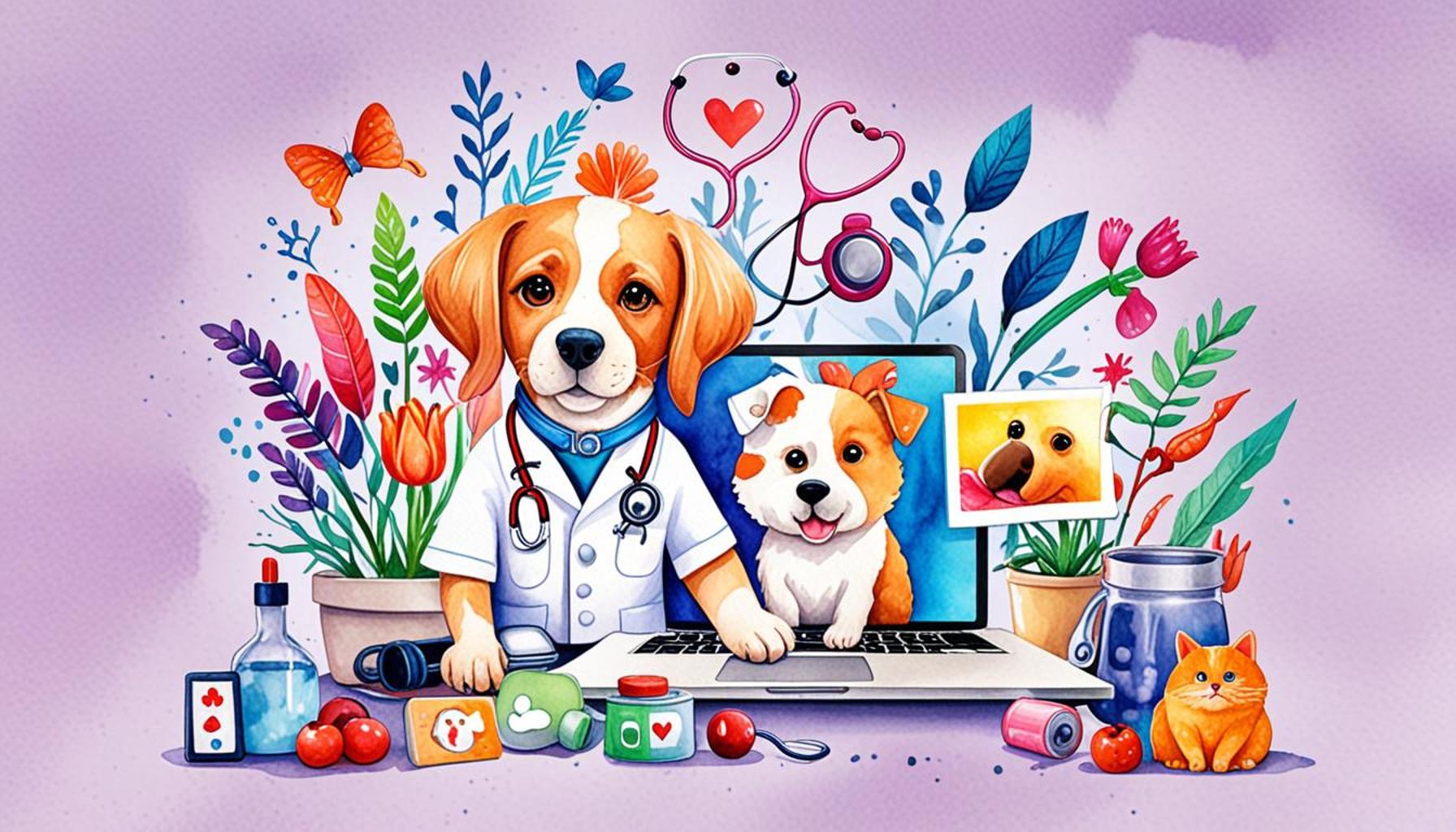The Impact of Regular Exercise on Pet Longevity

The Importance of Exercise for Pets
When it comes to our furry friends, regular exercise plays a crucial role in their overall health and longevity. As pet owners, we often emphasize nutrition and routine vet visits, but physical activity is equally vital. Studies indicate that active pets tend to live longer and enjoy a higher quality of life. A survey from the Association for Pet Obesity Prevention found that over 50% of dogs and cats in the U.S. are classified as overweight or obese. This alarming statistic underscores the importance of exercise in supporting a healthy weight and enhancing the well-being of our pets.
Benefits of Regular Exercise
Engaging your pet in consistent physical activity can lead to impressive benefits, such as:
- Weight Management: Regular exercise helps to prevent obesity by burning excess calories and fostering muscle development. Just 30 minutes of play or walking daily can make a significant difference for both dogs and cats.
- Improved Cardiovascular Health: Exercise keeps the heart and lungs functioning efficiently, reducing the risk of heart disease. Pets that engage in aerobic activities, like running or playing fetch, tend to have healthier cardiovascular systems.
- Mental Stimulation: Physical activity is not just about the body; it also engages the mind. Exercise can reduce anxiety and behavior issues. Activities such as scent work or puzzle toys can provide mental challenges while allowing pets to stay active.
Moreover, various forms of exercise can be tailored to your pet’s needs. For instance, high-energy breeds like Border Collies benefit immensely from agility training, while older dogs may prefer gentle swimming or leisurely walks. Each activity contributes uniquely to their health and happiness.
Engaging in Active Lifestyles
In the United States, many pet owners are recognizing the importance of an active lifestyle for their pets. Activities such as hiking, swimming, and agility training have become popular. Not only do these activities provide exercise, but they also enhance the bond between you and your pet. For example, taking your dog on a hike can introduce them to new environments, stimulating their senses and improving their mood.
Consider exploring local dog parks or pet-friendly hiking trails. These settings encourage socialization, which can be beneficial for your pet’s mental health. Moreover, participating in community events, such as dog walks, can motivate you to keep your pet active while connecting with other pet owners.

Understanding the significance of an active routine is the first step toward ensuring your pet’s longevity and happiness. The outcomes of increased physical activity will not only surprise you but may inspire you to create a more dynamic lifestyle for your beloved companion. Encouraging consistent exercise can lead to a happier, healthier pet, ultimately enriching both your lives.
DISCOVER MORE: Click here to learn about cat body language
How Exercise Contributes to Pet Longevity
Regular exercise is a powerful determinant of your pet’s lifespan, influencing many health factors that can either extend or shorten their time with you. With the surge of pet ownership in the United States—approximately 67% of households own a pet, according to the American Pet Products Association—it’s crucial for pet owners to understand how consistent physical activity can lead to improved longevity.
The science behind exercise and longevity lies in the relationship between physical activity and various health aspects. When pets engage in regular exercise, their bodies benefit from enhanced metabolism, better circulation, and improved muscle strength. Additionally, physical activity effectively reduces the risk of chronic conditions such as diabetes, arthritis, and certain types of cancer—ailments often linked to obesity and a sedentary lifestyle.
The Link Between Exercise and Health Conditions
To understand how exercise impacts longevity, consider the following health conditions:
- Obesity: A leading cause of preventable health issues in pets, obesity can significantly decrease their lifespan. The extra weight strains the joints and vital organs, making them more susceptible to a range of diseases. Regular exercise helps maintain a healthy weight, ultimately leading to a longer, healthier life.
- Joint Health: Active pets benefit from increased flexibility and joint mobility, thanks to the lubrication produced during physical activities. This is particularly vital in older pets, where exercise can slow the progression of arthritis and improve overall mobility.
- Metabolic Health: Regular exercise enhances insulin sensitivity, reducing the risk of diabetes. Maintaining stable blood sugar levels contributes to better overall health, which can directly impact longevity.
Moreover, a study published in the journal Veterinary Journal highlighted that dogs with a regular exercise routine could live up to 20% longer than their sedentary counterparts. The data emphasizes that setting aside time for physical activity can profoundly influence your pet’s lifespan.
It is also essential to recognize that not all exercises are created equal. Tailoring the activity to suit your pet’s age, breed, and energy level can maximize benefits. For instance, younger, high-energy breeds may thrive in running sessions or obedience training, while senior pets might find joy in shorter walks or gentle playtime. Engaging with pet fitness experts or veterinarians can provide valuable insights into developing an appropriate exercise plan for your furry friend.
In summary, understanding the profound impact of regular exercise on pet longevity not only enhances their quality of life but also fosters a stronger bond between you and your pet. Exercise can become a bridge that leads to a longer, more fulfilling life for your companion, while simultaneously enriching your experiences together.
| Health Benefits | Behavioral Improvements |
|---|---|
| Reduced Obesity Risk | Enhanced Mood: Regular exercise improves a pet’s mood, reducing anxiety and stress. |
| Stronger Immune System: Consistent physical activity helps boost the immune response, making pets less prone to diseases. | Better Social Interaction: Exercise provides opportunities for socialization, which can lead to improved temperament in pets. |
When considering the impact of regular exercise on pet longevity, it becomes evident that the benefits extend beyond just physical health. Maintaining a healthy weight is crucial for pets; a lower obesity risk directly translates to fewer associated health issues such as diabetes and joint problems. Equally important is how exercise can lead to a stronger immune system, fostering overall well-being.Moreover, the effects of exercise on behavioral aspects cannot be understated. Regular physical activity not only enhances mood but also can significantly reduce anxiety levels in pets. This creates a more relaxed and patient companion for pet owners. Engaging in exercise routines also opens doors to better socialization opportunities, allowing pets to interact positively with other animals and humans, leading to improved behavior traits. These intertwined benefits create a strong case for incorporating regular exercise as an essential aspect of pet ownership.
DISCOVER MORE: Click here to dive deeper into pet nutrition trends
Benefits of Exercise Beyond Physical Health
While the physical benefits of regular exercise are clear, the positive impact of consistent physical activity goes far beyond bodily health. Engaging your pet in regular exercise can significantly enhance their mental and emotional well-being, contributing to a longer lifespan. Exercise can act as a natural mood enhancer, reducing anxiety and stress levels in pets. Regular activity sustains mental stimulation, which is vital for cognitive health, particularly in aging pets.
The Role of Mental Stimulation
Pets, much like humans, require mental engagement to thrive. Exercise provides opportunities for social interaction, exploration, and sensory stimulation, all of which are crucial for keeping pets mentally sharp. Activities such as playing fetch or involving them in agility courses not only promote physical health but also stimulate their minds. According to the American Kennel Club, dogs that regularly engage in mentally stimulating activities are less likely to experience cognitive decline as they age. In turn, this cognitive vitality can lead to prolonged lifespans.
Social Interactions and Bonding
Exercise often involves taking our pets to parks or joining them in play with other animals, facilitating social interactions both for pets and their owners. These experiences can reduce loneliness and reinforce bonding, creating a reassuring routine that pets often relish. A well-socialized pet is generally happier and less likely to develop behavioral issues, contributing positively to their overall longevity.
Moreover, the routine of regular exercise fosters a stronger connection between owner and pet that can enhance emotional health. A study from the Human-Animal Bond Research Institute found that regular physical activity shared between pets and their owners leads to increased happiness and lower stress levels in both parties. When pet owners prioritize exercise, they not only boost their pet’s health but also foster a more profound companionship that resonates with emotional security, further guaranteeing a longer, healthier life.
Setting Realistic Exercise Goals
Creating an effective exercise regimen tailored to your pet’s unique needs is essential. Regularly incorporating activities, such as structured play sessions or agility training, can offer significant health benefits. The American Veterinary Medical Association suggests that pets should receive at least 30 minutes of moderate exercise daily, although this can vary depending on species, breed, and age.
For instance, senior dogs may require less intensity and longer periods of rest, making walks in calmer environments ideal. Conversely, young and high-energy breeds might benefit from rigorous activities that allow them to release pent-up energy. Consulting with a veterinarian can help in establishing realistic exercise goals that align with your pet’s current health status and lifestyle.
In some instances, pet owners can look toward alternative forms of exercise, such as swimming, which is easy on the joints and provides cardiovascular benefits without strain. Community pet activities, including group walks or clubs focused on dog sports, can also serve to enhance socialization while ensuring that your pet remains actively engaged.
DIVE DEEPER: Click here to discover the latest trends
Conclusion: Ensuring a Fulfilling and Long Life for Your Pet
In summary, the relationship between regular exercise and pet longevity is both profound and multifaceted. Physical activity benefits pets through improved cardiovascular health, weight management, and enhanced physical fitness—critical factors that contribute to a longer life. However, the advantages extend into the realm of mental and emotional health, where exercise serves as a powerful tool for enhancing cognitive function, reducing anxiety, and fostering emotional resilience.
Regular engagement in physical activity not only nurtures a happier, healthier pet but also reinforces the bond between owner and animal. Every shared moment of play or exploration fortifies the emotional connections that are vital for both parties. As highlighted by research from reputable organizations such as the American Kennel Club and the Human-Animal Bond Research Institute, promoting a routine of physical activity creates an environment where pets thrive, experience reduced behavioral issues, and enjoy a greater sense of well-being.
Ultimately, the impact of regular exercise on pet longevity underscores the importance of a tailored approach. By setting realistic exercise goals based on your pet’s specific needs, you pave the way for not only a longer life but also a more fulfilling one. As you embark on this journey of physical activity with your pet, remember that both of you stand to gain immensely—not just in years lived, but in the quality of the moments shared.
It’s time to prioritize an active lifestyle for your beloved companion, ensuring they remain vibrant and joyful throughout their lives. Your pet’s longevity and happiness are in your hands; now, let your next chapter of adventures begin!


